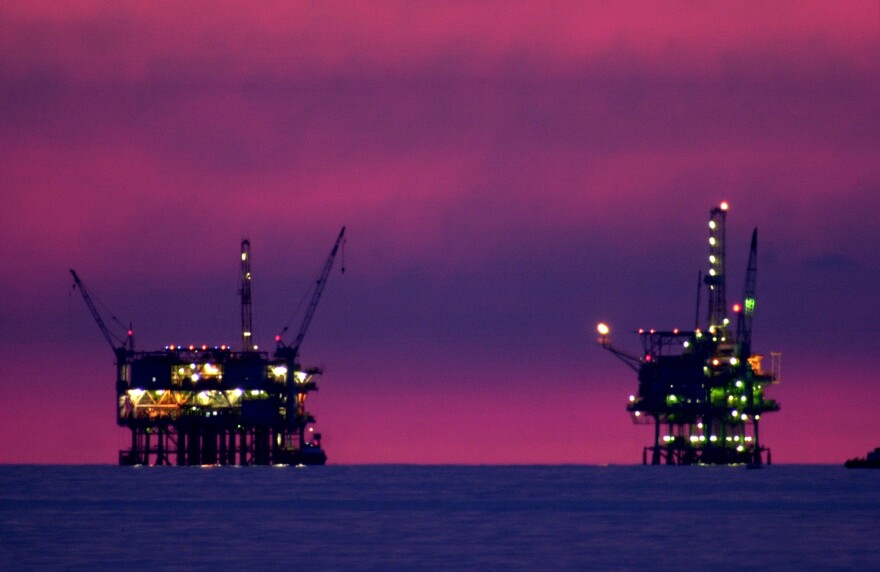With our free press under threat and federal funding for public media gone, your support matters more than ever. Help keep the LAist newsroom strong, become a monthly member or increase your support today.
Why Obama's offshore oil drilling ban didn't extend to the Pacific Ocean

President Obama has permanently banned offshore oil drilling in big swaths of the Arctic and Atlantic Oceans. In recent weeks, Governor Jerry Brown has been asking him to do the same for the Pacific, but it didn’t happen. Why not?
Well, part of the reason is there simply wasn't enough opposition to off-shore drilling in California. And that's likely because there hasn't been a new offshore well in the Pacific for over 30 years.
“I think the Pacific has been the victim of its own blessed state," said Niel Lawrence, Alaska Director for the Natural Resources Defense Council.
"It’s been decades since anyone was foolish enough to propose new drilling off the Pacific Coast. And as a result there hasn't been this long history of public mobilization around saving the place.”
After the Santa Barbara oil spill in 1969, Californians began to push back against offshore drilling — and the state hasn't allowed coastal drilling since then. The last time a well was drilled in California waters where the federal government has jurisdiction was in 1982. Two years later, the feds held their last sale of offshore California leases, according to the Congressional Research Service. And in its latest leasing plan, which came out this November, the federal Bureau of Ocean Management has said no leases will be offered in the Pacific for another five years.
Few oil companies are interested in drilling new wells in the Pacific anyway. Dave Quast of the California oil and gas advocacy group Energy in Depth said he wasn't aware of any — even though he thinks offshore oil development can be done safely.
Meanwhile, the Obama administration has allowed drilling in the Arctic, and has considered allowing it in the Atlantic. But in recent months, it has indicated it no longer supports drilling in either place.
Earlier this year, the Bureau of Ocean Management considered allowing oil production in the Atlantic for the first time in over 30 years — until opposition from residents and environmentalists convinced the agency to reverse its position.The agency decided to do the same in the Arctic in the fall.
The Obama administration may have wanted to assure those areas are permanently protected before Donald Trump takes office. Trump has vowed to boost oil and gas production both on and off-shore.
Even though Obama didn't permanently ban drilling in the Pacific, he has created new areas along the California coast where drilling is not allowed. Last June, he significantly expanded two national marine sanctuaries along the Sonoma and Mendocino county coastline, creating the new Greater Farallones National Marine Sanctuary.







